The Rise of Pet Yoga - Benefits and How to Get Started
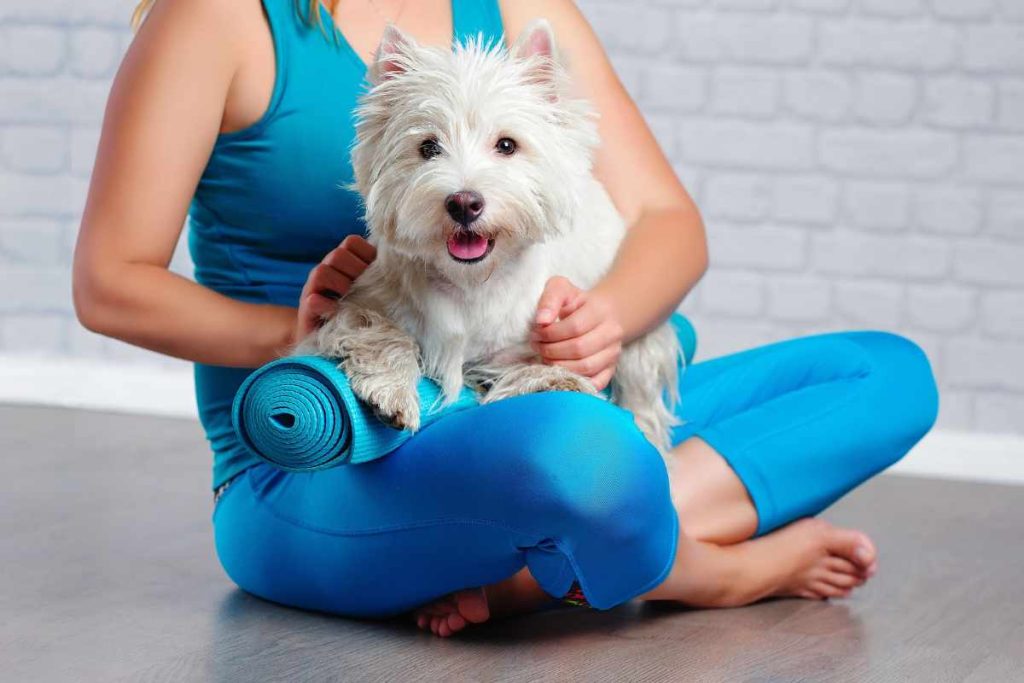
Yoga has long been celebrated for promoting relaxation, flexibility, and overall well-being, but a growing trend is combining these benefits with the joy of spending time with our furry friends: pet yoga.
Whether you have a dog, cat, or even a rabbit, pet yoga offers a unique way to boost your physical and emotional health while deepening your bond with your pet.
In this article, we’ll explore the benefits of pet yoga, share practical tips for getting started, and provide advice to avoid common challenges.
What is Pet Yoga (and Doga)?
Pet yoga, often called “doga” when practiced with dogs, involves incorporating your pet into your yoga sessions.
Beyond stretching and mindful breathing, pets participate in poses or simply share your space, creating a sense of companionship and emotional support.
Bringing your pet into your wellness routine merges the therapeutic effects of yoga with the unconditional love pets naturally provide, making your practice more enjoyable and emotionally fulfilling.
A Brief History of Pet Yoga
Pet yoga began gaining attention in the early 2000s.
Suzi Teitelman, a yoga instructor, coined the term “doga” and developed classes specifically designed for dogs and their owners.
The goal was to combine the physical and relaxation benefits of yoga with the soothing influence of pets.
Over time, this practice expanded beyond dogs to include cats, rabbits, and other small pets, gaining worldwide popularity among pet owners seeking mindful and fun activities with their companions.
Top Benefits of Practicing Pet Yoga
1. Strengthen the Bond with Your Pet
Pet yoga is an excellent opportunity to enhance your relationship with your furry friend.
Sharing focused time on the mat creates trust, affection, and emotional closeness.
How Bonding Works:
Physical Touch: Gentle petting during poses promotes a sense of security and affection.
Shared Experiences: Performing activities together reinforces teamwork and trust.
2. Reduce Stress and Anxiety for Both You and Your Pet
Yoga is well-known for its stress-relieving properties, and pets amplify these effects.
Their presence can calm the nervous system, lowering stress hormones for both of you.
Tips for Stress Reduction:
Calming Presence: Simply having your pet nearby can reduce cortisol levels.
Mindful Breathing: Practicing breathing techniques alongside your pet helps regulate emotions for both.
Studies show that interacting with pets can lower blood pressure, reduce stress, and enhance emotional well-being (American Heart Association, 2013).
3. Improve Physical Health for You and Your Pet
Yoga promotes flexibility, strength, and balance, while gentle pet movements encourage your pet’s physical activity.
Physical Benefits:
For You: Increases flexibility, tones muscles, and reduces tension.
For Your Pet: Gentle stretches or massages can support joint health and overall activity.
4. Boost Mindfulness and Emotional Awareness
Pet yoga enhances mindfulness by encouraging awareness of your pet’s comfort and emotional state.
Pets often mirror your calmness, creating a shared sense of relaxation.
Key Mindfulness Practices:
Mutual Calmness: Your relaxation directly influences your pet’s mood.
Understanding Needs: Mindfulness during practice improves communication and empathy with your pet.
5. Fun, Interactive, and Enjoyable
Beyond health benefits, pet yoga is simply fun.
Even if your dog playfully stretches with you or your cat curls up nearby, the experience adds joy and lightheartedness to your routine.
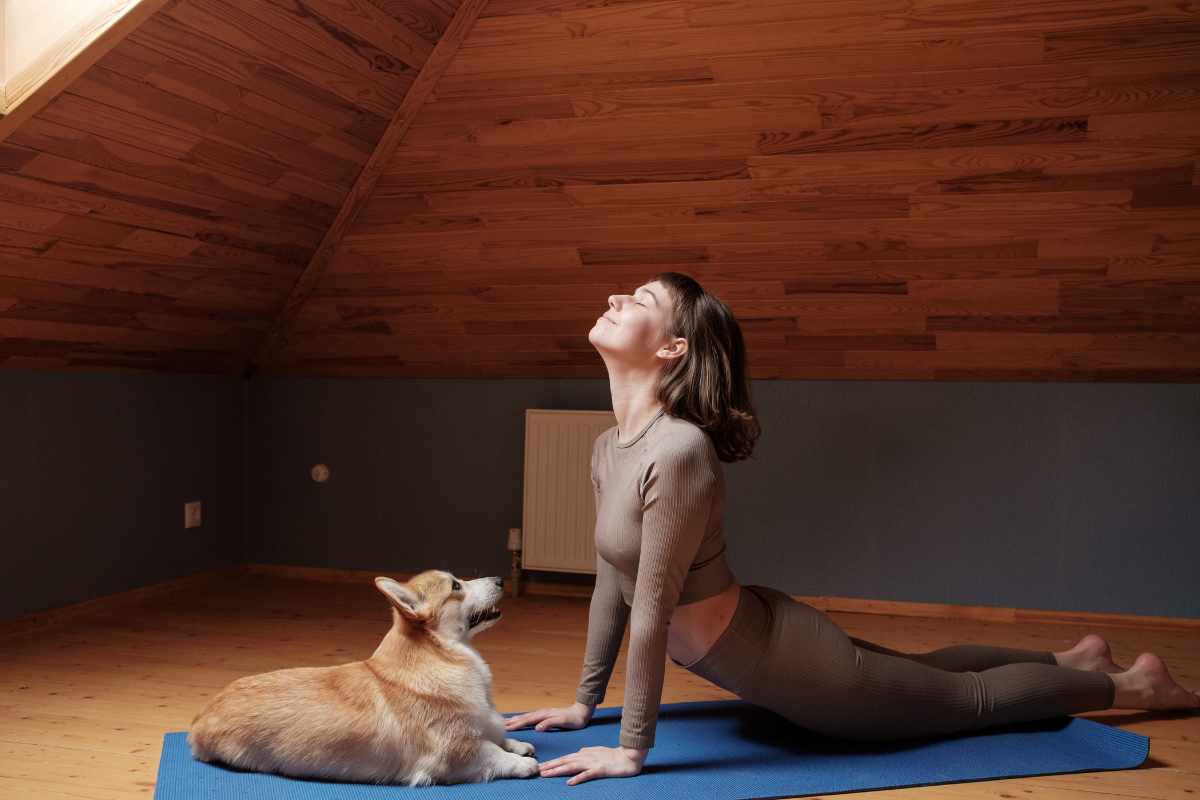
How to Start Pet Yoga Safely
1. Choose the Right Pet
Not all pets enjoy participation. Observe your pet’s temperament before starting.
Pet Selection Tips:
Dogs: Calm dogs are ideal; excitable dogs may need a gradual introduction.
Cats: Allow cats to observe or relax nearby; avoid forcing participation.
Other Pets: Small pets like rabbits may enjoy being present but may not physically engage.
2. Create a Comfortable Practice Space
Set up a quiet, distraction-free area with soft flooring, yoga mats, and blankets.
Tips:
Use soft mats or pillows for both comfort and safety.
Minimize noise and interruptions to keep your pet relaxed.
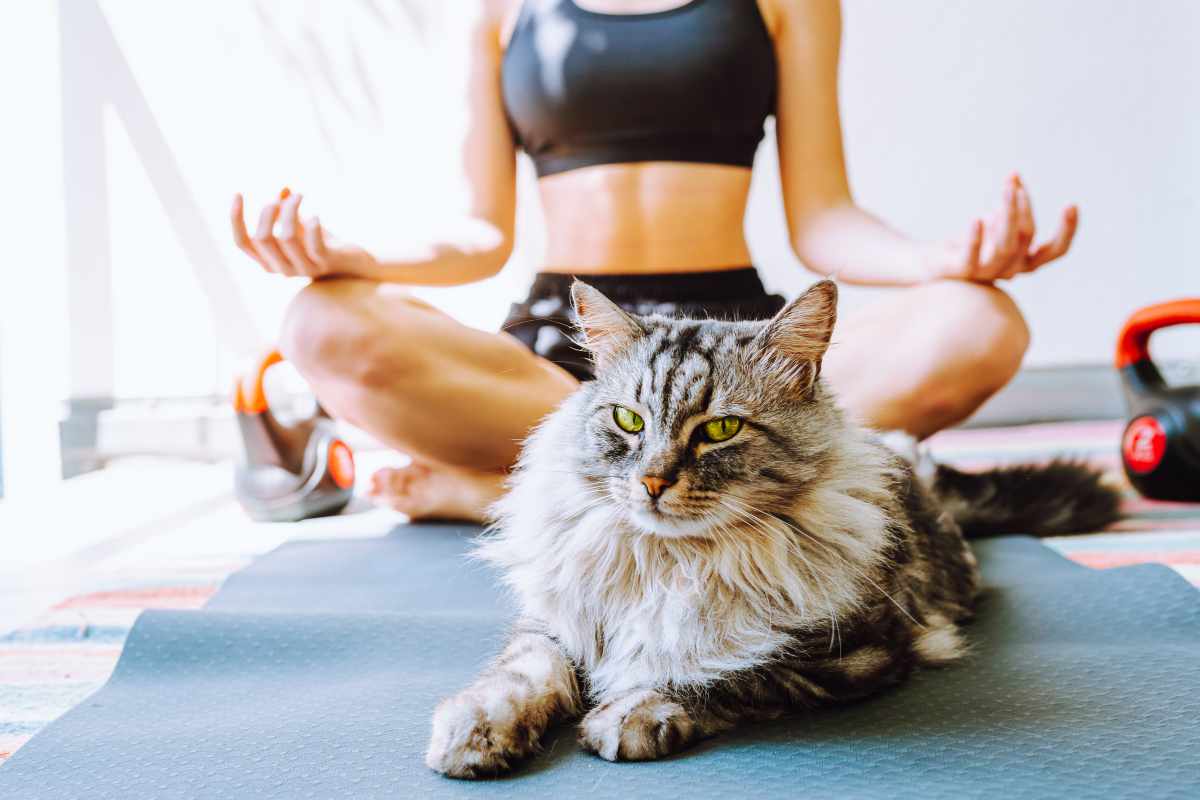
3. Start with Simple Poses
Begin with easy, safe poses before advancing. Safety and comfort come first.
Examples:
Downward Dog: Encourage your dog to stretch alongside you.
Seated Pose: Sit cross-legged and invite your pet to rest beside you.
Chest Opener: Gentle stretches with your pet nearby enhance bonding.
4. Be Patient and Enjoy the Process
Pet yoga is about connection, not perfection. Your pet may not participate fully—focus on shared enjoyment and relaxation.
Common Challenges and Precautions:
Avoid forcing your pet into poses.
Watch for signs of discomfort or stress (panting, retreating, restlessness).
Keep sessions short initially to build comfort and confidence.
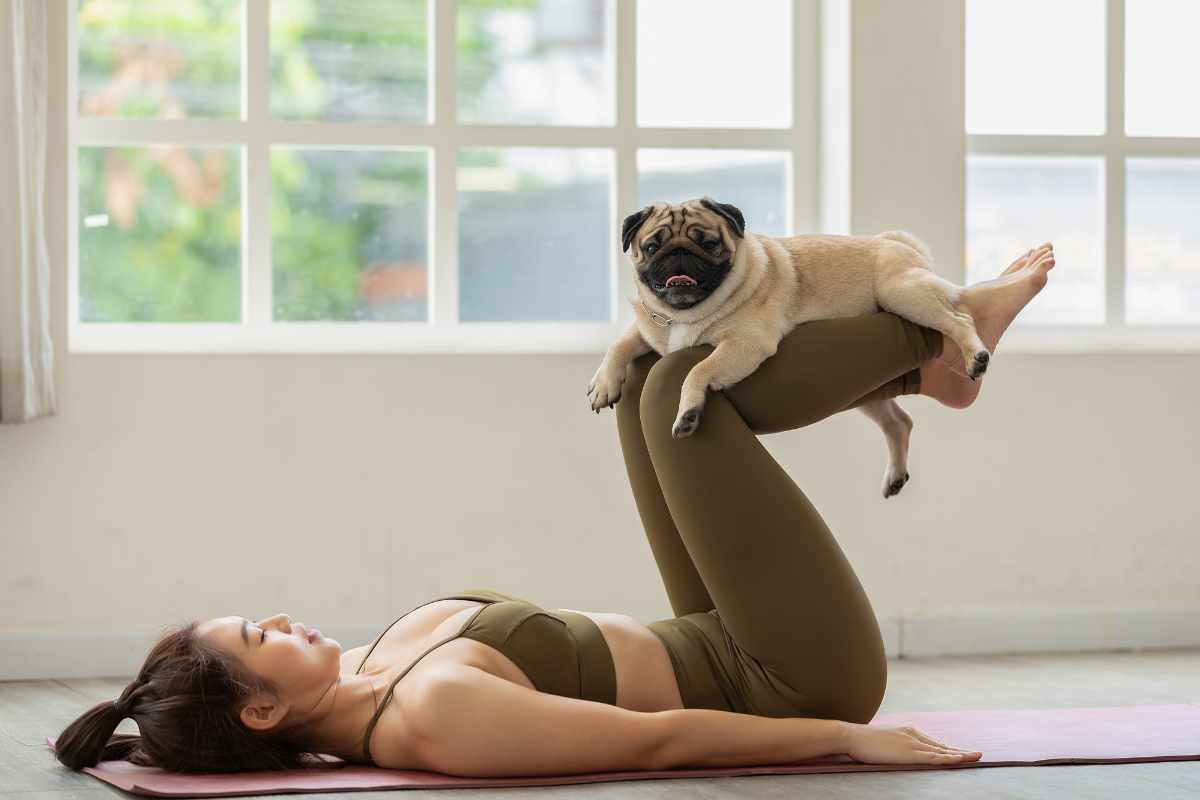
Embrace the Joy of Pet Yoga
Pet yoga offers a unique way to combine wellness, fun, and companionship.
By starting with simple poses, setting up a calm environment, and prioritizing enjoyment, you can create a fulfilling practice that strengthens your bond, promotes relaxation, and supports emotional and physical well-being—for both you and your pet.
Try a short session today and notice the difference in your connection, calmness, and overall happiness.
Did you find this post useful or inspiring? Save THIS PIN to your PETS Board on Pinterest!


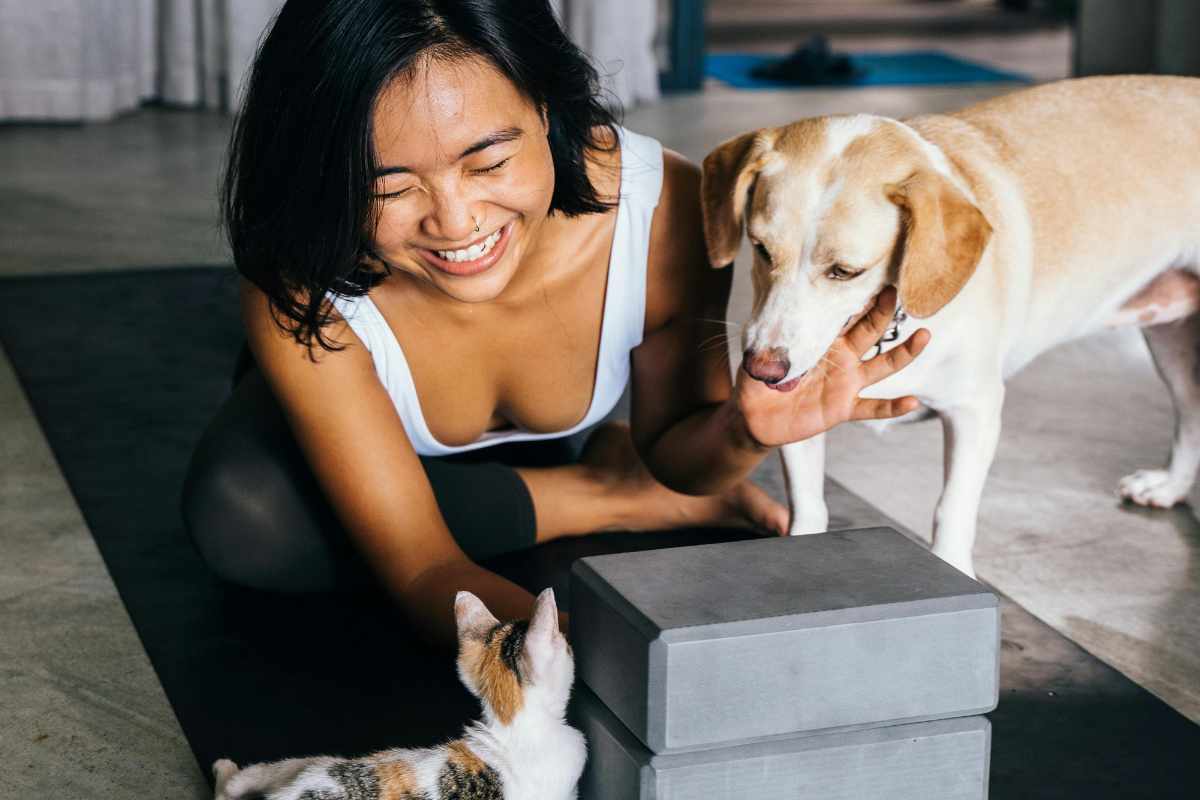
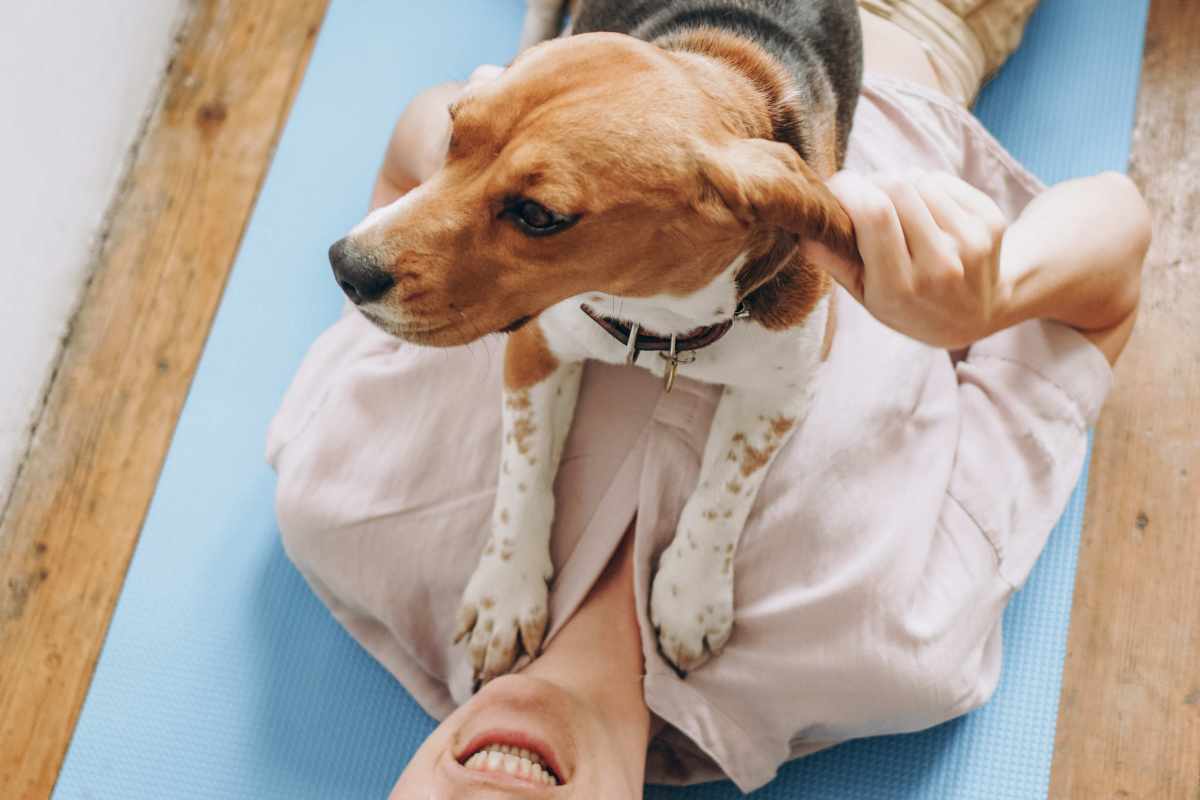
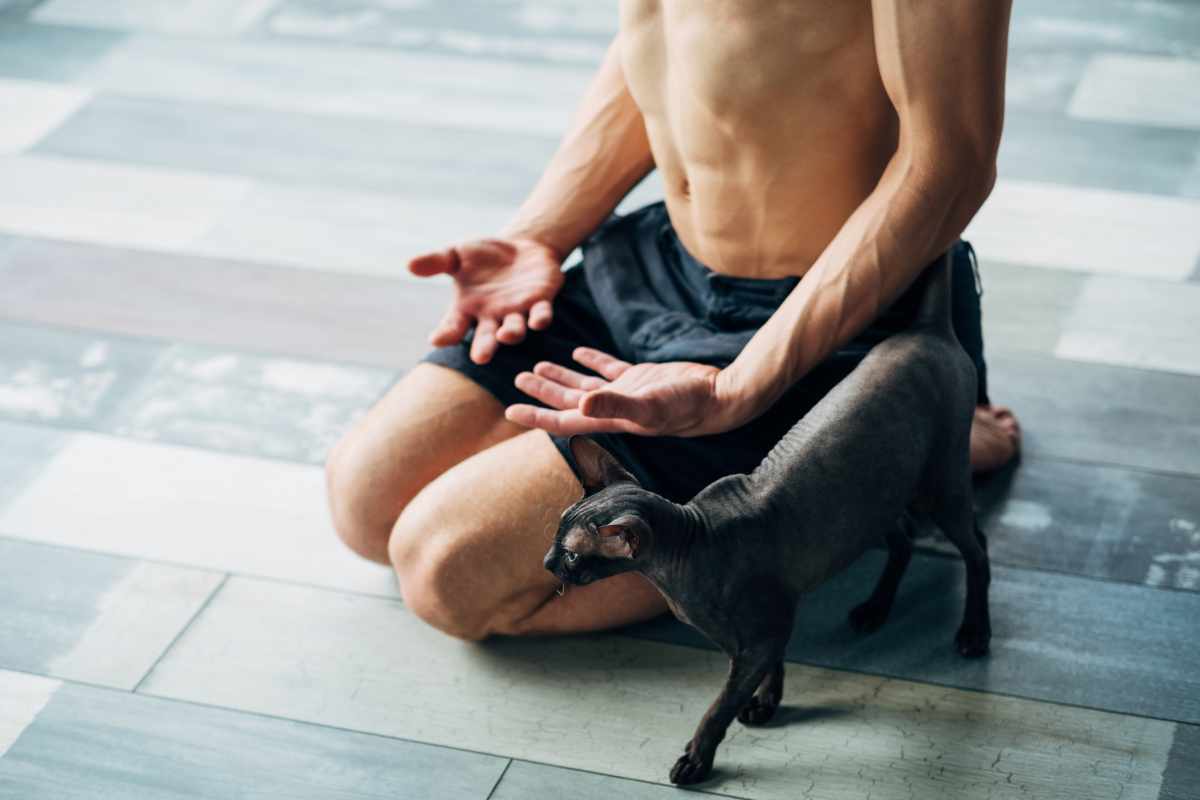
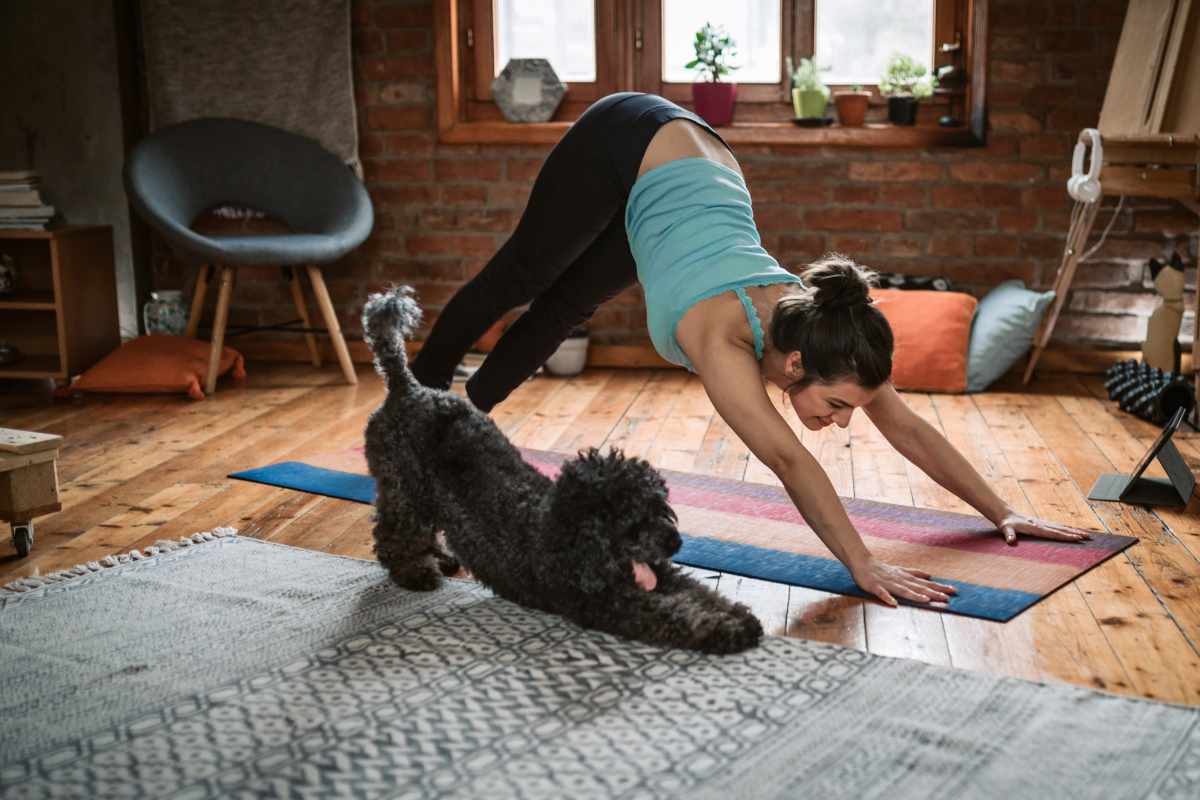
You may also like